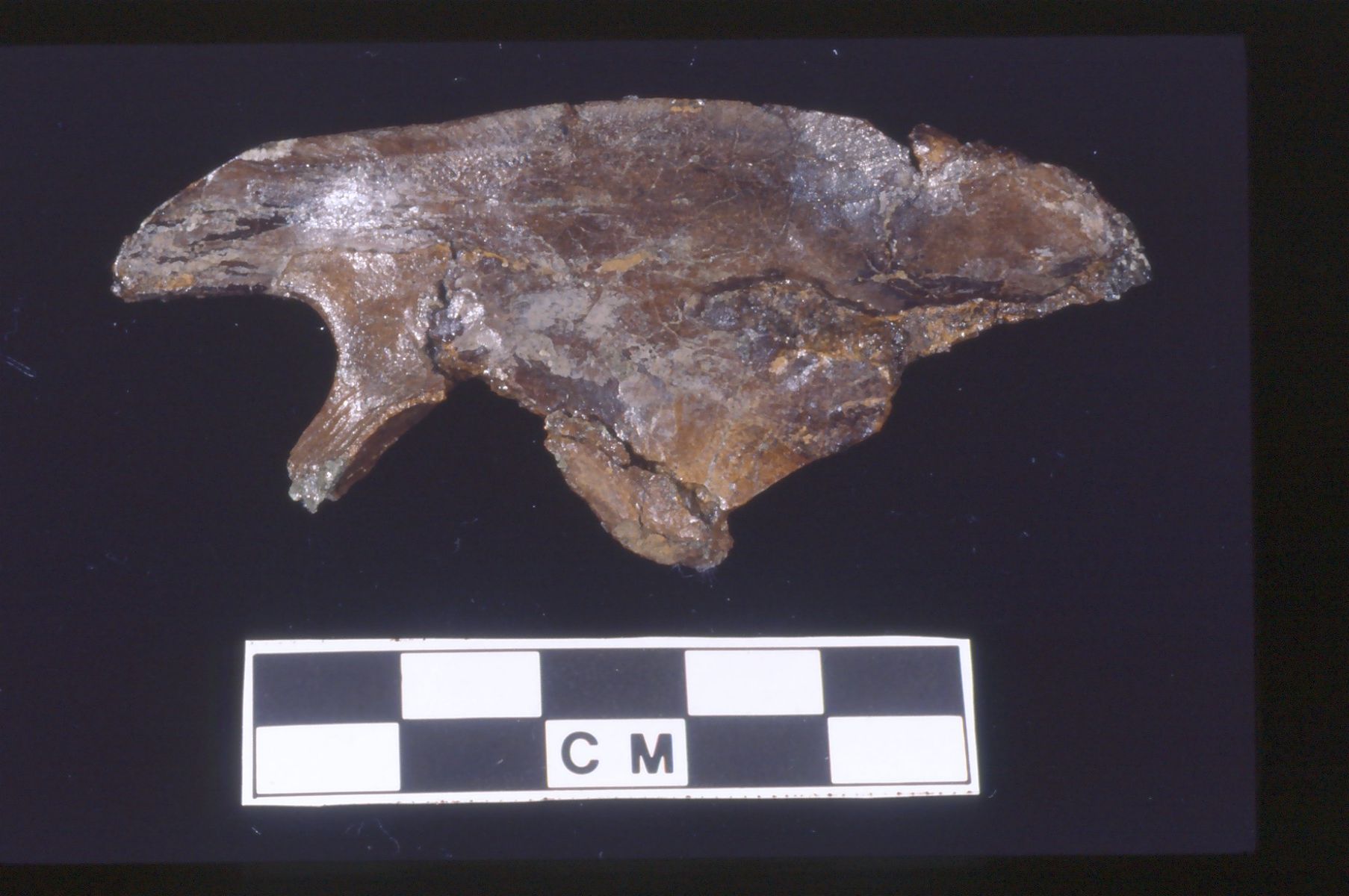Fossil Preparation 6
PREPARATION OF A PARTIAL HIP BONE FROM THE ERIC THE RED WEST 2016 FIELD SEASON
By Lesley Kool
#275 in the Eric the Red West field catalogue is a concentration of five small bones, all within a few centimetres of each other. The short descriptions on the field label indicated that there was "1 nice limb, 1 other limb, 2 spongy cross-sections and 1 half only" (image #01). The excavators had circled the associated bone parts in different coloured crayon, making my job a lot easier to connect the pieces together. On examination I decided that I would commence my preparation with the bone circled in pink, not for any other reason than that it looked "interesting". The bone was in two parts revealing an elongated, flat spongy cross section approximately 4cm in length and up to one centimetre wide, and wider at one end with some smooth outer bone exposed (image #02).
I consolidated the broken surfaces of bone with dilute Paraloid (discussed in fossil preparation 2) and trimmed the main rock, which had four of the five bones exposed on various surfaces. Someone in the field had started to rock saw through the main rock and had stopped, deciding it would be best to trim it under laboratory conditions. One of the incomplete rock saw cuts neatly divided the pink ringed bone from the rest of the bones, so I placed a bolster chisel (wide bladed chisel) into the rock saw cut and carefully tapped until the rock broke along the line of the cut. Once separated from the rest of the rock I was able to start removing the matrix from around the bone (image #03).
Preparation of this half of the bone went smoothly for a while with the matrix coming away cleanly from the surface of the bone, which was gradually becoming narrower that the original cross section. Approximately 3cm from the broken surface I came across a distorted area where some of the bone had been crushed and pushed upwards at almost right angles to the surface of the bone. This damage did not occur across the whole bone, only on one edge, suggesting that the bone may have been damaged during transportation in the river channel. Continuing on for a further two centimetres I finally reached the end of the bone, where it measured only 2cm in width. This area was also damaged and indicated that the actual end of the bone was missing.
The other half of the bone was in a smaller piece of rock that did not require trimming and after only one centimetre I reached another broken edge of bone, further confirming that this bone had indeed been badly damaged during its original transportation more than 100 million years ago.
Placing the two parts of the broken bone together I was able to make a preliminary identification (image #04), even though both ends of the bone were missing. The wide flat cross-section of the bone, together with the tapering at one end is very similar to the anterior part of a dinosaur ilium, one of the three bones that make up the hip joint.
The spongy texture of the cross-section through the bone is typical of ornithopod dinosaur bones as theropod dinosaur bones typically have large air-filled pockets bounded by a very thin lattice-work of bone.
Comparison with a number of small ornithopod ilia from nearby Dinosaur Cove and the Flat Rocks site (image #05) in the Vertebrate Palaeontology Collection at Museum Victoria, confirm that this incomplete bone is very likely a small ilium. Preparation of the other bones in the large rock will indicate if we have an associated collection of bones from possibly the same individual or just a random collection of bones from different animals whose bones ended up in the same river channel and were deposited very close together so many millions of years ago.
As the ilium is incomplete and cannot add further information regarding its identification, no further preparation will occur in the near future. The specimen will be lodged as part of the Victorian Early Cretaceous Collection at Museum Victoria.
Images: All taken by Lesley Kool.
Image #1 Both parts of the ilium, ringed in pink crayon, before preparation.
Image #2 One half of the bone in cross-section.
Image #3 Second half of the bone, partially exposed.
Image #4 The partial ilium fully exposed on one side.

Image #5 Small ornithopod ilium from the Victorian Early Cretaceous Collection, Museum Victoria.
visits